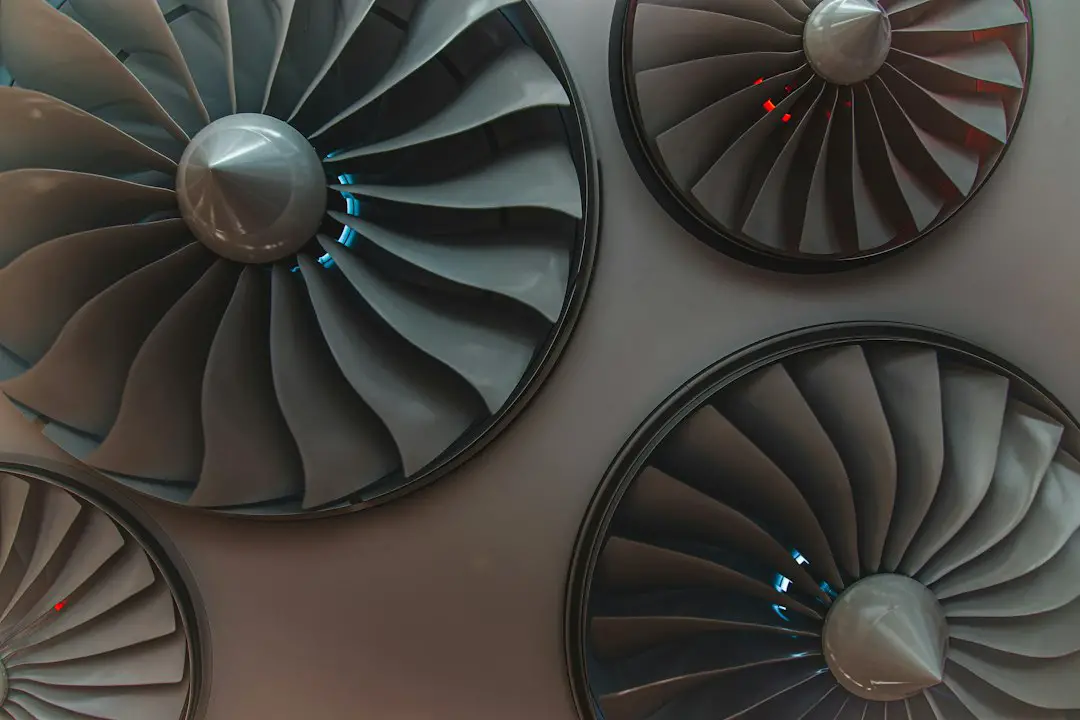Support our educational content for free when you purchase through links on our site. Learn more
How Many Blades Are Quietest on a Ceiling Fan? [2024]
Picture this: it’s a hot summer day, and you’re sitting in your living room, desperately seeking relief from the sweltering heat. You turn on your ceiling fan, hoping for a refreshing breeze, but instead, you’re greeted with a loud, whirring noise that drowns out any chance of relaxation. Sound familiar? We’ve all been there. That’s why we’re here to answer the burning question: how many blades are the quietest on a ceiling fan?
Quick Answer
When it comes to the number of blades on a ceiling fan, more blades do not necessarily mean a quieter fan. In fact, the number of blades has little impact on the noise level of a ceiling fan. Other factors, such as motor quality, blade pitch, and airflow efficiency, play a more significant role in determining how quiet a ceiling fan is.
Quick Tips and Facts
Before we dive deeper into the world of ceiling fan blades, here are a few quick tips and facts to keep in mind:
✅ More blades do not equal a quieter fan: The number of blades on a ceiling fan has minimal impact on noise levels.
✅ Focus on motor quality: A high-quality motor is crucial for a quiet ceiling fan.
✅ Consider blade pitch: Blades with a steeper pitch tend to move more air but can also generate more noise.
✅ Airflow efficiency matters: Look for ceiling fans with high CFM (cubic feet per minute) ratings and low power consumption for optimal performance.
Now that we’ve covered the basics, let’s take a deeper dive into the world of ceiling fan blades.
The Science Behind Ceiling Fan Blades
To understand why the number of blades doesn’t significantly affect the noise level of a ceiling fan, we need to explore the science behind it. The primary purpose of ceiling fan blades is to move air, creating a cooling breeze. The number of blades affects the airflow pattern and efficiency, but not necessarily the noise level.
While it may seem intuitive to assume that more blades would create a quieter fan, it’s not that simple. The noise generated by a ceiling fan comes primarily from the motor and the airflow it creates. The number of blades doesn’t directly impact these factors. Instead, it’s the design, quality, and efficiency of the motor that determine how quiet or noisy a ceiling fan is.
Blade Ceiling Fans: Debunking the Myth
Let’s address the myth that ceiling fans with more blades are quieter. While it’s true that some fans with more blades may appear quieter due to their slower speed, this is not a direct result of the number of blades. In reality, the slower speed is often a consequence of the fan’s design, motor power, or blade pitch.
In fact, ceiling fans with fewer blades can be just as quiet, if not quieter, than their multi-blade counterparts. The key is to focus on other factors that contribute to a quiet fan, such as motor quality, blade pitch, and airflow efficiency.
Metal, Plastic, or Timber Ceiling Fan Blades: Which is Quieter?
When it comes to the material of the ceiling fan blades, there are three common options: metal, plastic, and timber. Each material has its own set of characteristics that can impact the noise level of the fan.
✅ Plastic blades: Plastic blades are lightweight, budget-friendly, and suitable for both indoor and outdoor use. While they may not be as durable as other materials, they can still provide a quiet and efficient cooling experience.
✅ Metal blades: Metal blades are known for their durability and ease of cleaning. They can withstand wear and tear better than plastic blades. However, metal blades can sometimes generate more noise due to their weight and construction.
✅ Timber blades: Timber blades are often praised for their aesthetic appeal and quiet operation. They are robust and can help reduce noise levels, making them an excellent choice for those seeking a peaceful environment. However, timber blades may not be ideal for hot and humid climates, as they can be prone to warping.
Ultimately, the material of the blades is just one factor to consider when choosing a quiet ceiling fan. It’s essential to evaluate the overall design, motor quality, and airflow efficiency to ensure a peaceful and comfortable experience.
Choose a Ceiling Fan That is Suitable for Your Decor
While noise level is a crucial factor when selecting a ceiling fan, it’s also essential to choose a fan that complements your decor and personal style. Ceiling fans come in a wide range of designs, finishes, and sizes, allowing you to find the perfect match for your space.
Consider the following factors when choosing a ceiling fan:
✅ CFM (Cubic Feet per Minute): Look for fans with high CFM ratings, as this indicates their ability to move a significant amount of air.
✅ Power consumption: Opt for energy-efficient fans that consume less power while still providing excellent airflow.
✅ Noise level: Check user reviews and ratings to get an idea of how quiet a fan is. Look for fans with noise ratings below 50 decibels for a peaceful experience.
✅ Design and style: Choose a fan that complements your decor and personal style. Whether you prefer a sleek and modern look or a more traditional design, there’s a fan out there for you.
By considering these factors, you can find a ceiling fan that not only cools your space effectively but also adds a touch of style to your home.
FAQ

Which is quieter, a 3-blade or 5-blade fan?
Both 3-blade and 5-blade fans can be equally quiet if they are designed with high-quality motors and efficient airflow. The number of blades alone does not determine the noise level of a fan.
Are 3-blade or 4-blade fans quieter?
Again, the number of blades does not directly correlate with the noise level of a fan. Both 3-blade and 4-blade fans can be quiet if they are well-designed and have high-quality motors.
Is a 3-blade or 5-blade ceiling fan better?
The choice between a 3-blade or 5-blade ceiling fan ultimately comes down to personal preference and the design aesthetic you’re aiming for. Both options can provide efficient cooling and quiet operation if they are of high quality.
Which fan blades are quieter?
When it comes to quiet fan blades, it’s essential to focus on factors such as motor quality, blade pitch, and airflow efficiency rather than the number of blades. Look for fans with high-quality motors and efficient airflow for a quieter experience.
Read more about “Are Bigger Ceiling Fans Quieter? …”
Conclusion

In conclusion, when it comes to the number of blades on a ceiling fan, more is not necessarily quieter. The number of blades has minimal impact on the noise level of a fan. Instead, focus on factors such as motor quality, blade pitch, and airflow efficiency to ensure a quiet and efficient cooling experience.
When choosing a ceiling fan, consider the overall design, motor quality, and airflow efficiency. Look for fans with high CFM ratings, low power consumption, and noise ratings below 50 decibels for optimal performance. And remember, the number of blades is just one piece of the puzzle.
So, the next time you’re in the market for a ceiling fan, don’t get caught up in the number of blades. Instead, focus on finding a fan that combines style, efficiency, and quiet operation. Your future self will thank you for it.
Recommended Links
- CHECK PRICE on: Ceiling Fans | Walmart | eBay
- Shop Quietest Ceiling Fans on: Amazon | Walmart | eBay
- Quietest™ Article: Are Bigger Ceiling Fans Quieter? 2024
- Quietest™ Categories: Quiet Home Appliances | Quiet Electronics | Noise Reduction Tips | Noise-Free Transportation | Quiet Gaming Gear

